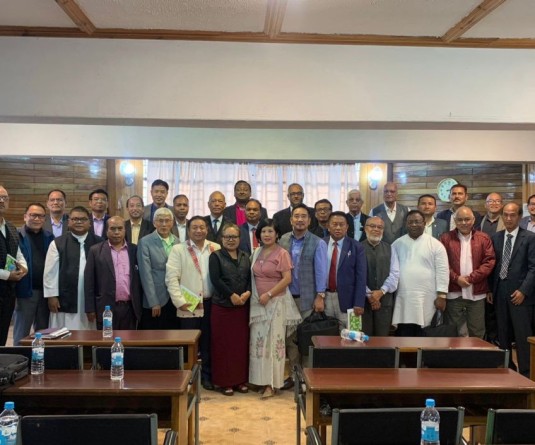
Martina Shitiri
Asst.Chief Tecnical Officer (ACTO) Genetics and Plant Breeding KVK, Tuensang, Nagaland
Genetic resources constitute the foundation upon which horticulture/Agriculture is based. These resources consist of diversity of genetic material in the form of traditional varieties and modern cultivars grown by farmers as well as wild relatives and other wild plants occurring in nature. Over the decades hundreds of different plant species have been domesticated and within each species, human and natural selection have combined to produce thousands of different varieties. The plant genetic resources constitute a reservoir of gene and gene complex and are the raw materials for improvement of agriculture/horticultural crops. The richness of genetic resources can provide many opportunities for rational adaptation and pragmatic approaches. But in situation of climate change and depletion of natural resources, the challenges are more to feed growing population suiting to their dietary behaviour and nutrient requirements.
One of the important aspects of Genetic resources management is their requirement of specific management strategy. For instances, some genetic resources can be conserved in seed bank, field gene bank, some genetic resources are propagated by seed, some by vegetative methods and some genetic resources are annual herbs and perennial trees. Therefore, management of genetic resources of agricultural/Horticultural crops is huge tasks offering both challenges and opportunities which cannot be accomplished by one or few institutions but large number of institution are required to join hands together. Introduced varieties and species have contributed significantly to the improvement of agricultural/horticultural crops in our country. These introductions have been used directly for cultivation as primary introduction while secondary introduction have been used in breeding for improving quality, productivity and resistance for biotic and abiotic stresses in the available cultivars.
Germplasm Collection
There is great diversity in underutilized in leafy vegetables, minor millets, medicinal and aromatic plants in our state. But these plants had received little attention and a large number of plant species are yet to identified and documented. Further, in some cases, the produce in natural habitats is being ruthlessly exploited and the habitats are being destroyed. There is an urgent need to closely monitor the genetic diversity-rich areas, and take appropriate measures to protect these genetic resources. In recent years efforts have been made to collect, characterize and conserve these genetic resources, but the needs to be further strengthened. An important aspect while collecting genetic resources is the recording of all passport information. This information can be supply to the central data base at NBPGR.The Bureau provides unique identity number (IC number) for all the established material and communicates to the collector/organization. This national identity is important to safe guard the IPR of the resources.
Germplasm Conservation
The Plant genetic resources serve as the basic for improvement of any agricultural or horticultural crop varieties and their continued availability to breeder is an essential and basic requirement for any area of improvement of crop varieties. The conservation and utilization of genetic resources is as old as agriculture itself. Farmers have conserved planting materials, seeds at their own level since time immemorial and these has been continue till today for their future to suit their specific needs and condition. In recent times efforts are being made to conserve these threatened resources. Strategies for conservation should be aimed at maximum safety, cost-effectiveness and efficiency, as well as assuring the accessibility to the materials for their use. The choice of conservation strategy depends mainly on the nature of the material to be conserved, i.e., life cycle, mode of reproduction, size and ecological status. The diverse agro climatic condition provides great opportunities for cultivation and conservation of diverse crops in Ex-situ and In-situ condition.
Germplasm Utilization
Many high yielding varieties and hybrids of different agricultural and horticultural crops have been developed for different regions and have been adopted for cultivation by many farmers. In the past, germplasm have been broadly utilized through selection from indigenous germplasm, direct introduction of germplasm through adoptive trials, hybridization among indigenous and selection, hybridization between indigenous and exotic germplasm and selection, besides breeding for disease and insect resistance. A number of landraces of trational varieties have been released with or without selection. Landraces from remote areas still offers large amount of genetic diversity for coolection, evaluation, exploitation, documentation and utilization.
Opportunities
Our state is bestowed with richness and diversity of plant biodiversity in relation to wide range of agricultural and horticultural crops which offer vast opportunities for bio-prospecting. There is several hundreds of naturally occurring edible wild species, which have been used by the local people as food, medicine and for other economical purposes, providing opportunities for identification of alternative sources of food. Similarly, search for new genes and their genetic improvement of cultivated species with increased productivity will address the food and nutritional security and provides reservoirs of desirable genes for sustainable crop improvement. The availability of indigenous knowledge (ITKs) information can provide as tool for further investigation, conservation and use.




